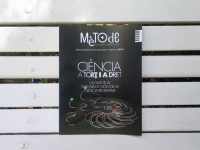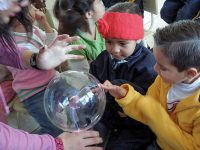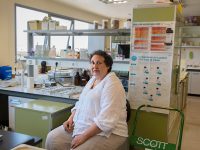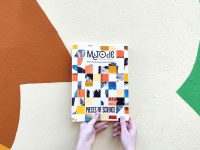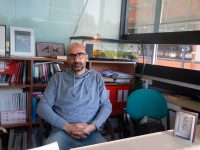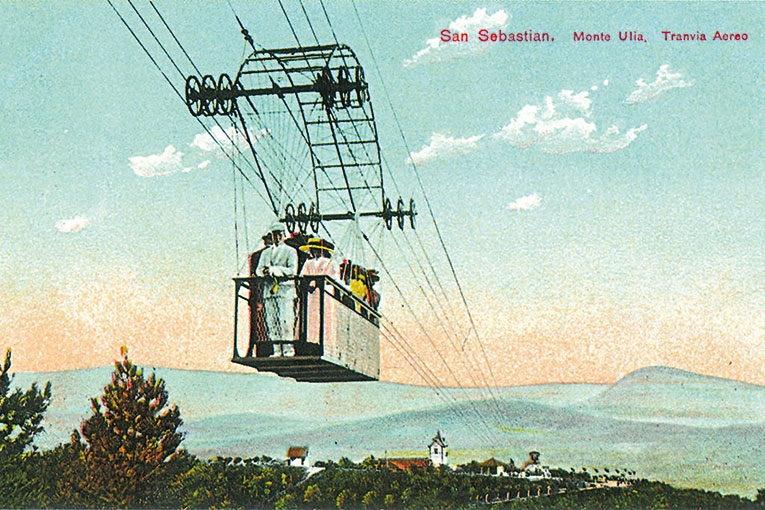
|
|
||
|
Civil engineering was, probably along with urban architecture and medical hygienics, the main driving movement of a model of progress and social modernisation that the liberal reforms of the late nineteenth century transformed into a realisable dream. The innovative imagination represented by the figure of the inventor – the main actor of this adventure – had an essential role in this process and figures such as the Croatian Nikola Tesla and Thomas A. Edison in the United States are well-known examples. In Spain, the creation of the Ministry of Public Works and Transport in the middle of the nineteenth century – following the initiative of the liberal governments – undertook a project of improvement of infrastructures and communications always led by civil engineers. Among all those who helped to make that dream of technological innovation in the service of progress and modernity come true, the most representative figure was Leonardo Torres Quevedo (1852-1936), Cantabrian, engineer by family tradition: his father, Luis Torres Vildósola, was a highway engineer and a railways specialist. Leonardo continued studying engineering in Madrid between 1871 and 1876, and after a first railway experience he further studied in several European countries. When he retuned to Spain in 1878, he began a very free and personal career as an inventor of objects with different levels of social and scientific use and application. We cannot forget the importance of the liberal professionals as an engine of social change during the second half of the nineteenth century throughout Europe and their power as a social group of experts. One of the first projects that Torres Quevedo finished was the design of a cable car that had initially a very cold reception both in Spain and in Switzerland, where it was presented. But that would be the starting point of the so-called Spanish Aerocar, the spectacular cableway which today still operates as a tourist attraction at the Niagara Falls. During those years at the end of the nineteenth century, Torres Quevedo also dedicated his inventiveness to calculating machines; between 1893 and 1900 he presented reports on algebraic machines at the Spanish Royal Academy of Sciences of Madrid – where he entered as a scholar in 1901 and which he presided over – and at the Paris Academy of Sciences. But his most famous invention is the semi-rigid dirigible, which constitutes an important milestone in the history of aeronautics: a device that had a great impact on the social representation of the power of science and technology. Torres Quevedo started working on it in 1902 and the first tests were between 1905 and 1908. He constructed the first models in Paris due to the greater availability of hydrogen, the essential gas to make it take off. According to Eugenio Portela, the airship could be inflated and it was easily transported with a couple of small lorries. However, once inflated it turned into a semi-rigid structure with longitudinal movement and a variable gravity centre. It could reach a speed of 80 km/h and it was used by the armies of France and England during the Great War. |
 Ministry of Culture Ministry of CultureHis work as inventor turned Leonardo Torres Quevedo into a high-profile figure. In the image, an interview with the engineer in the illustrated magazine La esfera in 1914. |
|
 Mètode MètodeHis most famous invention is the semi-rigid dirigible, which constitutes an important milestone in the history of aeronautics. In the image, tests carried out in Guadalajara on July 1908. |
||
|
|
||
|
Another domain that he cultivated and promoted throughout his career as an inventor was automation, on which he theorised in a monograph: Essays on automatics (1914). In 1903 he designed the telekino, «an automaton able to execute orders received through wireless telegraphy» that constitutes the first radio-controlled device, which Torres Quevedo used to make the first test runs of his dirigible without risk of human accidents. It was based on the use of Hertzian waves and was applied successfully to the control of a boat from the shore. In this same domain, he worked between 1912 and 1920 in a chess machine that was successfully applied and gave him great popularity. When he was already an internationally acclaimed figure, he received support from the Spanish Government to lead two centres: the Testing Centre of Aeronautics and the Laboratory of Automatics, to which he dedicated himself in the last years of his life, within the framework of the Association of Laboratories, which was part of the JAE (Board for the Extension of Scientific Studies and Research), the great core project of the so-called «Silver Age of science in Spain» driven by krausism and the renovation movement of science in Spain, presided by Santiago Ramón y Cajal. Torres Quevedo had the cooperation of a dozen craftsmen who worked under his direction and who were put into the service of scientific instrumentation design for research and the academic practices that were developed in the rest of JAE’s laboratories and the laboratories of the Residencia de Estudiantes (student housing). All this in a context of an essential scientific and technical collaboration in moments in which the technoscientific industry had not still developed internationally and in which acquiring foreign equipment was unattainable for the scarce resources of the State. Devices of application in physical or physiological research designed and built by Torres Quevedo received recognition in international congresses. Convinced of the importance of technological innovation for social progress, he promoted a Hispanic American Union of Scientific Literature and Technology, which began in 1930 the publication of a Hispanic-American Technological Dictionary. A project that must be seen within the framework of the Spanish political attempt to be in the lead of the cultural and scientific initiatives with the Hispanic American communities. Although the little institutionalised figure of the inventor at the beginning of the twentieth century has left many names outside of the academic culture and the historical archives, figures like Torres Quevedo deserve a widespread recognition to the effort of ingenuity and imagination in the service of society. Josep Lluís Barona. Professor of the History of Science. University of Valencia. |
||



